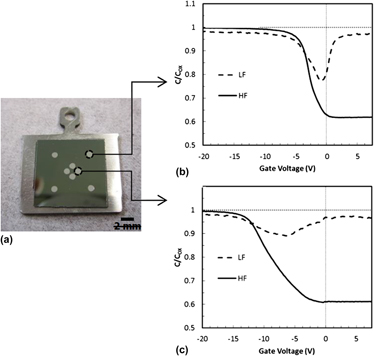Crossref Citations
This article has been cited by the following publications. This list is generated based on data provided by
Crossref.
Kulkarni, D.D.
Lyle, L.A.M.
and
Sosolik, C.E.
2016.
Ion transport through macrocapillaries – Oscillations due to charge patch formation.
Nuclear Instruments and Methods in Physics Research Section B: Beam Interactions with Materials and Atoms,
Vol. 382,
Issue. ,
p.
54.
Emeliyanov, Vladimir V.
Vatuev, Alexander S.
and
Useinov, Rustem G.
2018.
Impact of Heavy Ion Energy on Charge Yield in Silicon Dioxide.
IEEE Transactions on Nuclear Science,
Vol. 65,
Issue. 8,
p.
1496.
Cutshall, Daniel B.
Kulkarni, Dhruva D.
Harriss, James E.
Field, Daniel A.
Sosolik, Chad E.
and
Harrell, William R.
2018.
Effects of slow highly charged ion irradiation on metal oxide semiconductor capacitors.
Journal of Vacuum Science & Technology B, Nanotechnology and Microelectronics: Materials, Processing, Measurement, and Phenomena,
Vol. 36,
Issue. 5,
Cutshall, D.B.
Kulkarni, D.D.
Miller, A.J.
Harriss, J.E.
Harrell, W.R.
and
Sosolik, C.E.
2018.
Tracking ion irradiation effects using buried interface devices.
Nuclear Instruments and Methods in Physics Research Section B: Beam Interactions with Materials and Atoms,
Vol. 422,
Issue. ,
p.
47.
Kozlov, A
and
Quiney, H M
2019.
Comparison of Hartree–Fock and Hartree–Fock–Slater approximations for calculation of radiation damage dynamics of light and heavy atoms in the field of an x-ray free-electron laser.
Physica Scripta,
Vol. 94,
Issue. 7,
p.
075404.
Srinadhu, E. S.
Kulkarni, D. D.
Field, D. A.
Harriss, J. E.
and
Sosolik, C. E.
2019.
The effects of multicharged ion irradiation on a polycarbonate surface.
Radiation Effects and Defects in Solids,
Vol. 174,
Issue. 3-4,
p.
205.
Thanu, Dinesh P.R.
Srinadhu, Endu Sekhar
Zhao, Mingrui
Dole, Nikhil V.
and
Keswani, Manish
2019.
Developments in Surface Contamination and Cleaning: Applications of Cleaning Techniques.
p.
289.
Srinadhu, E. S.
Kulkarni, D. D.
Field, D. A.
Harriss, J. E.
and
Sosolik, C. E.
2022.
Multicharged ion processing for targeted nanostructure formation.
Journal of Applied Physics,
Vol. 132,
Issue. 15,
